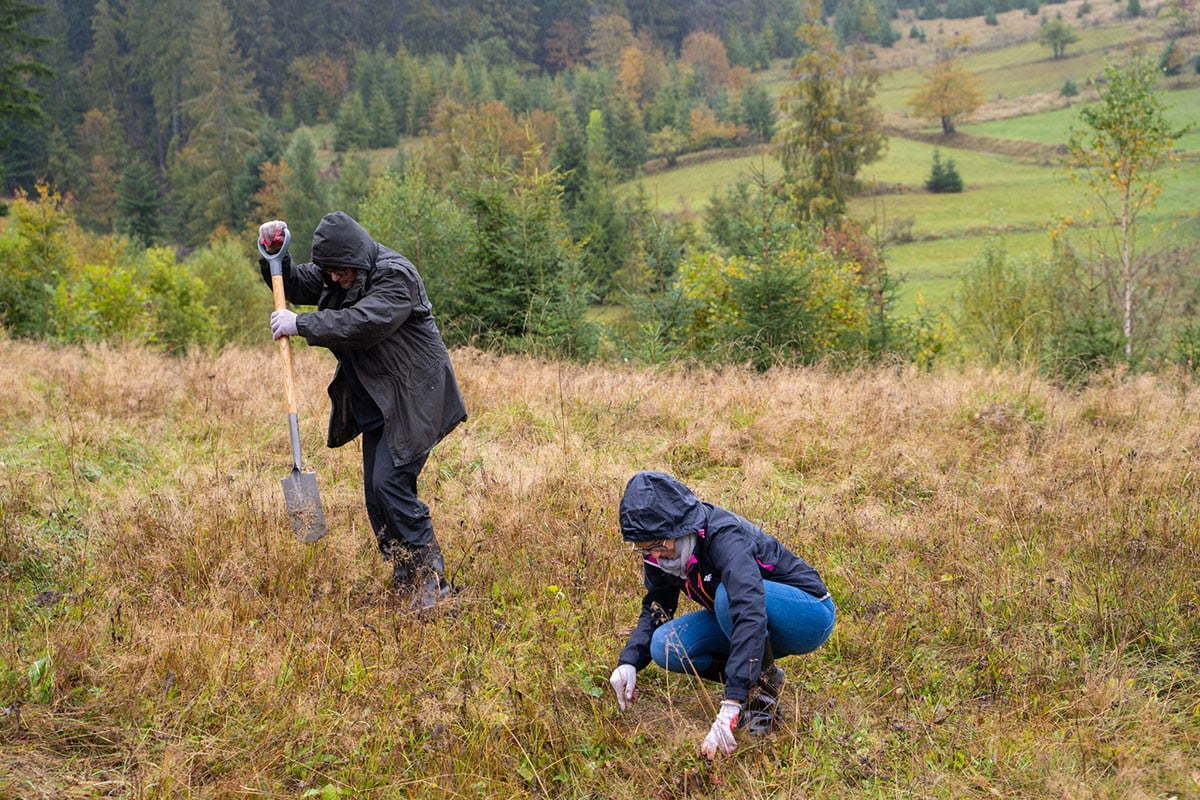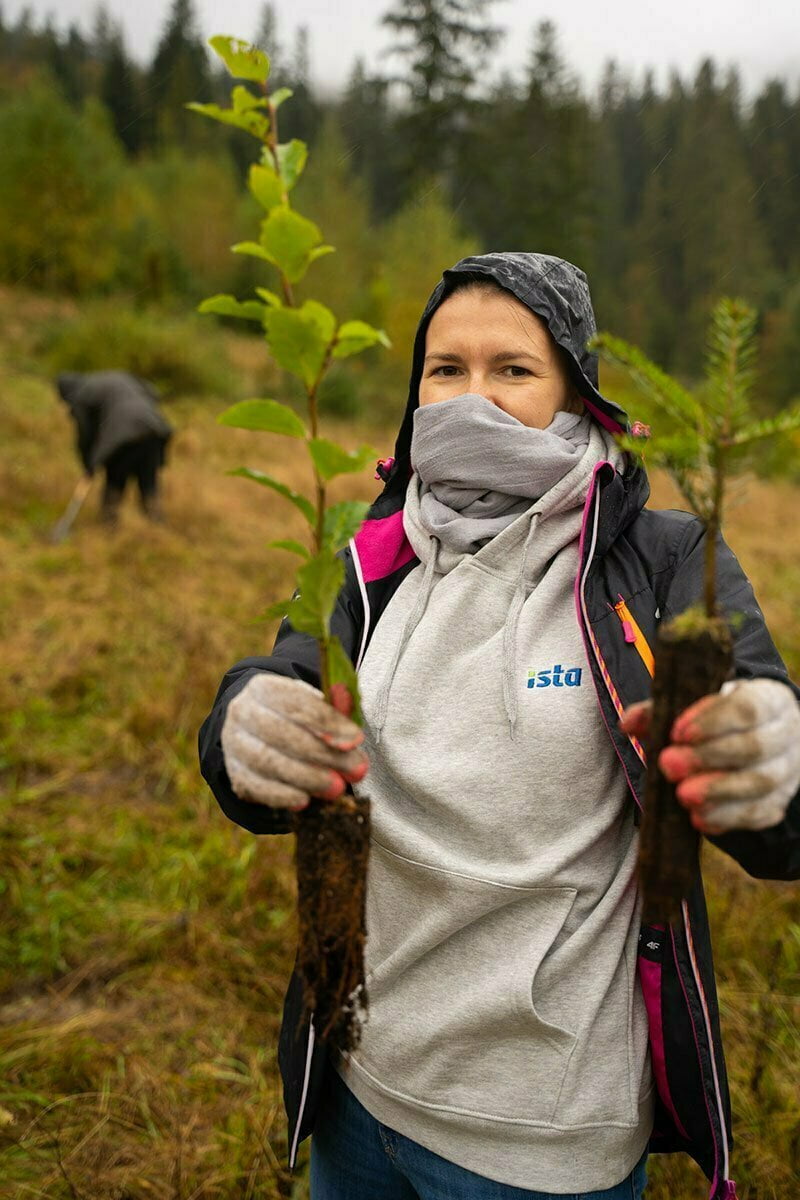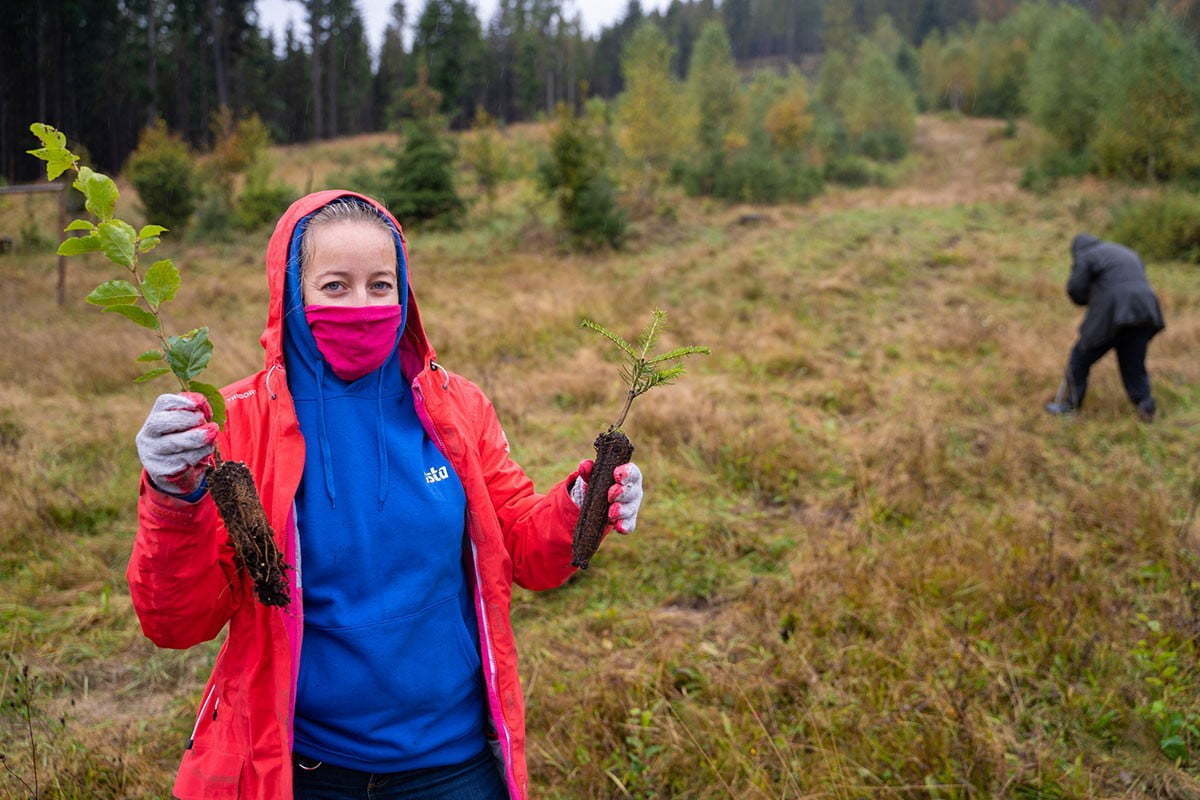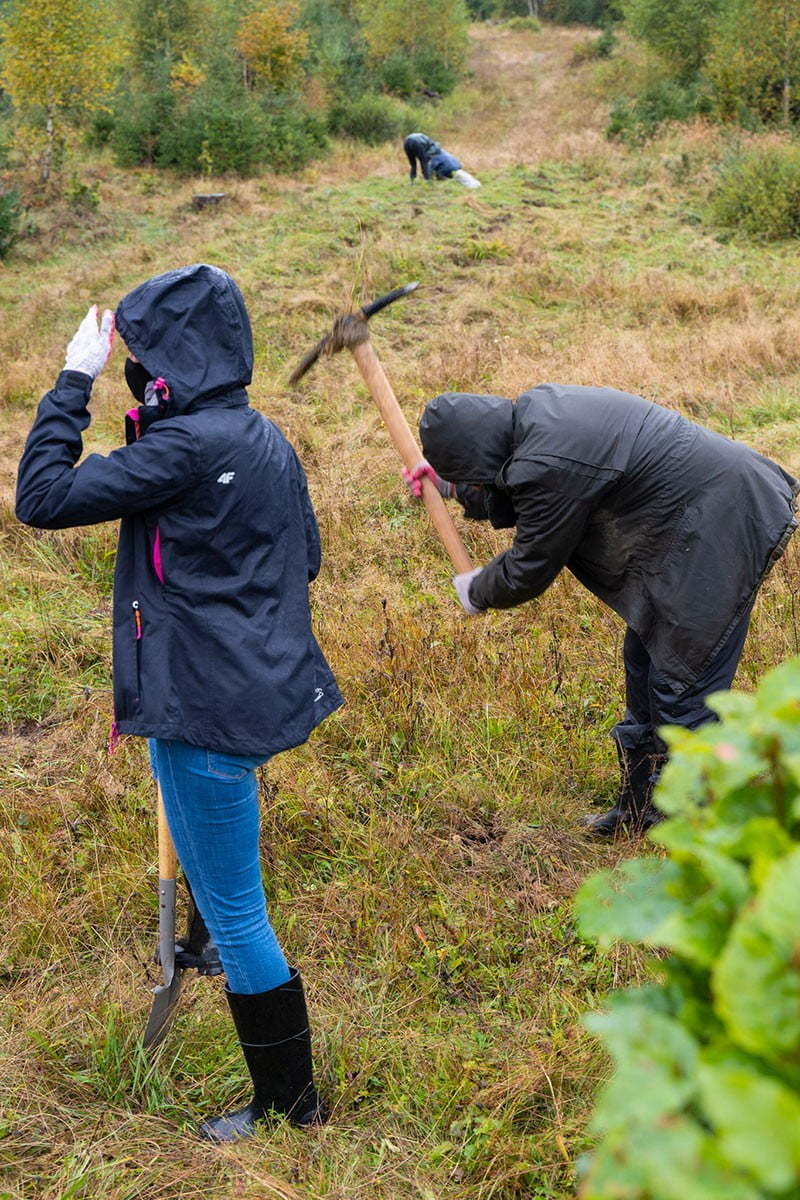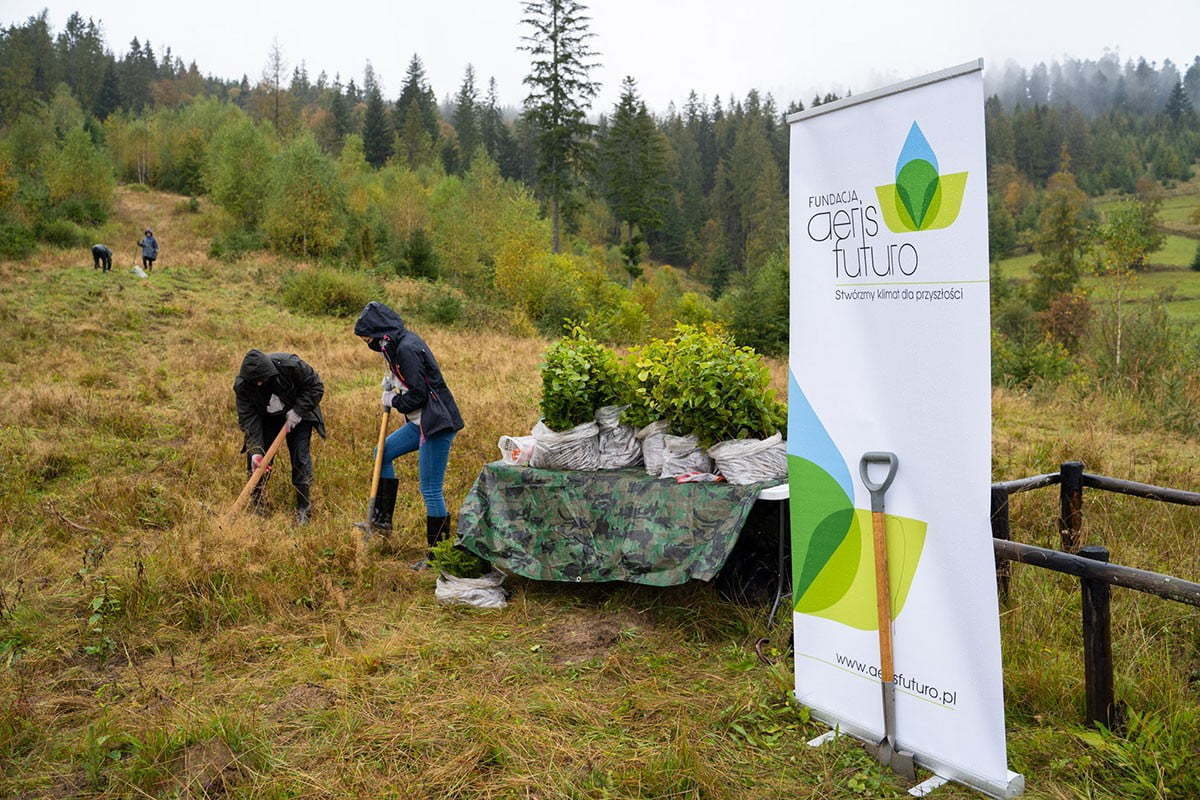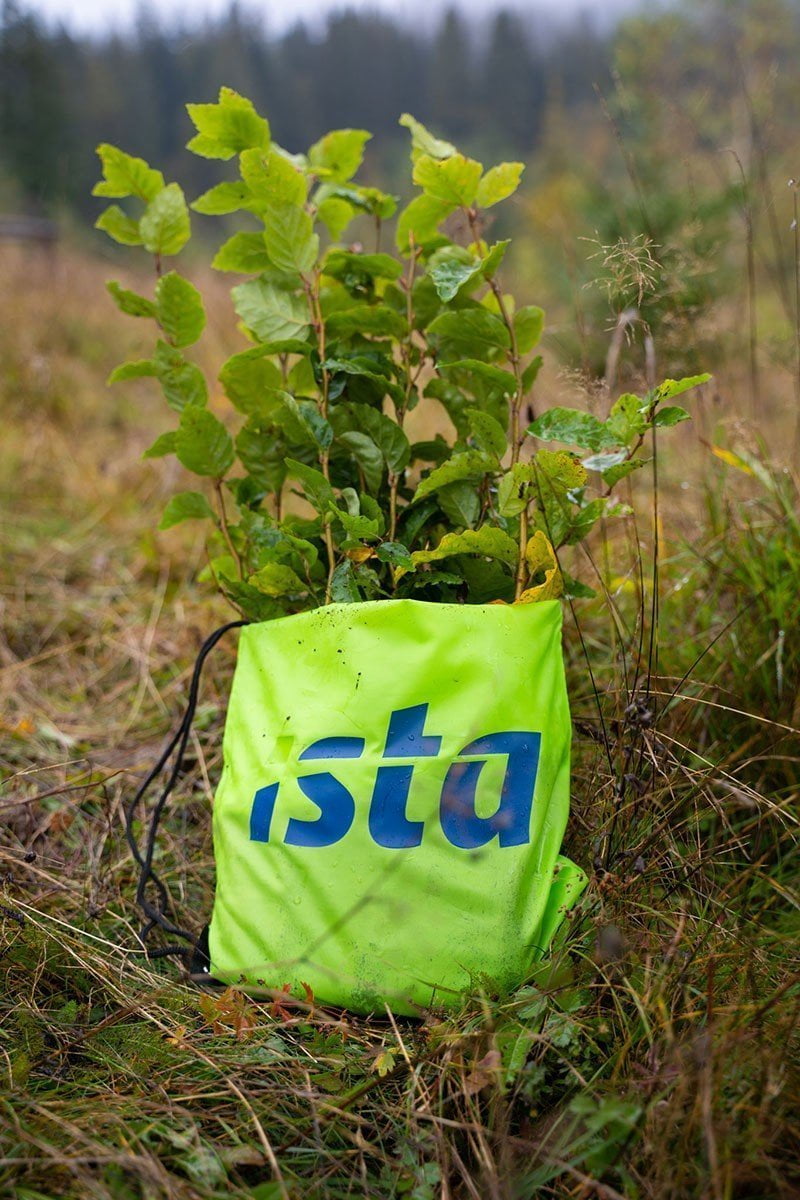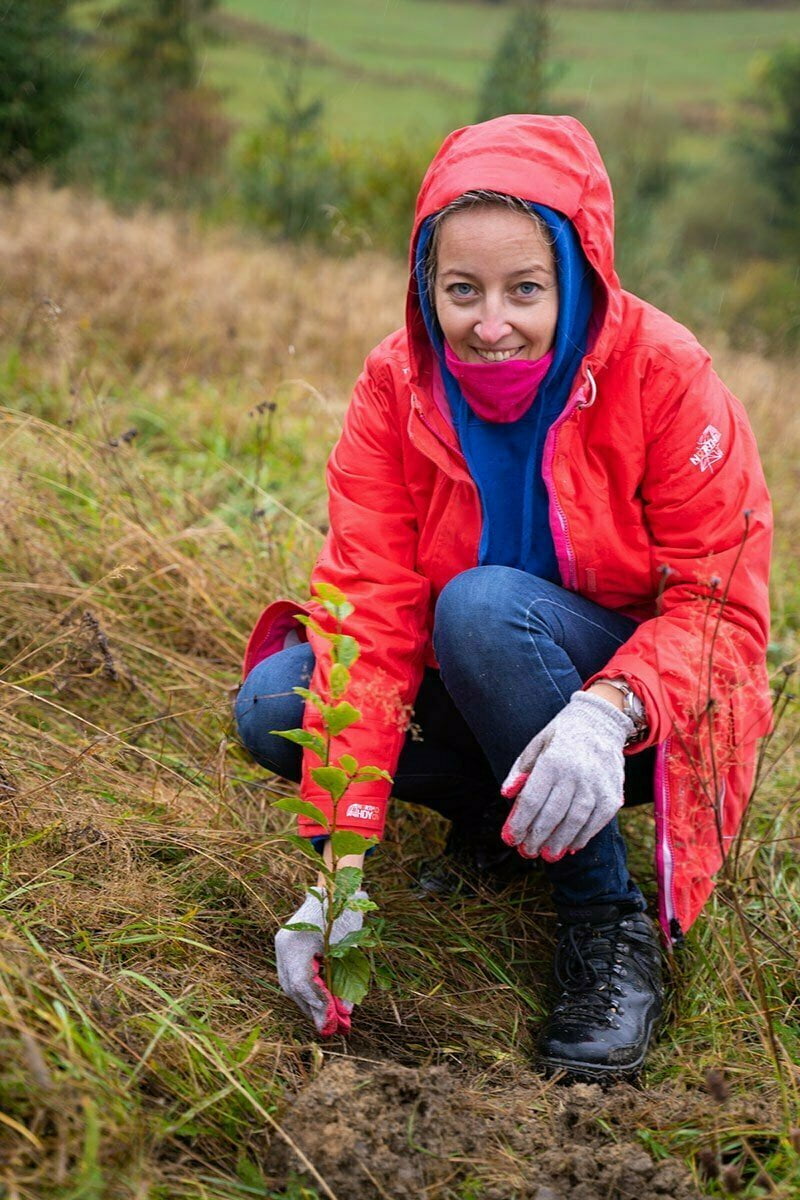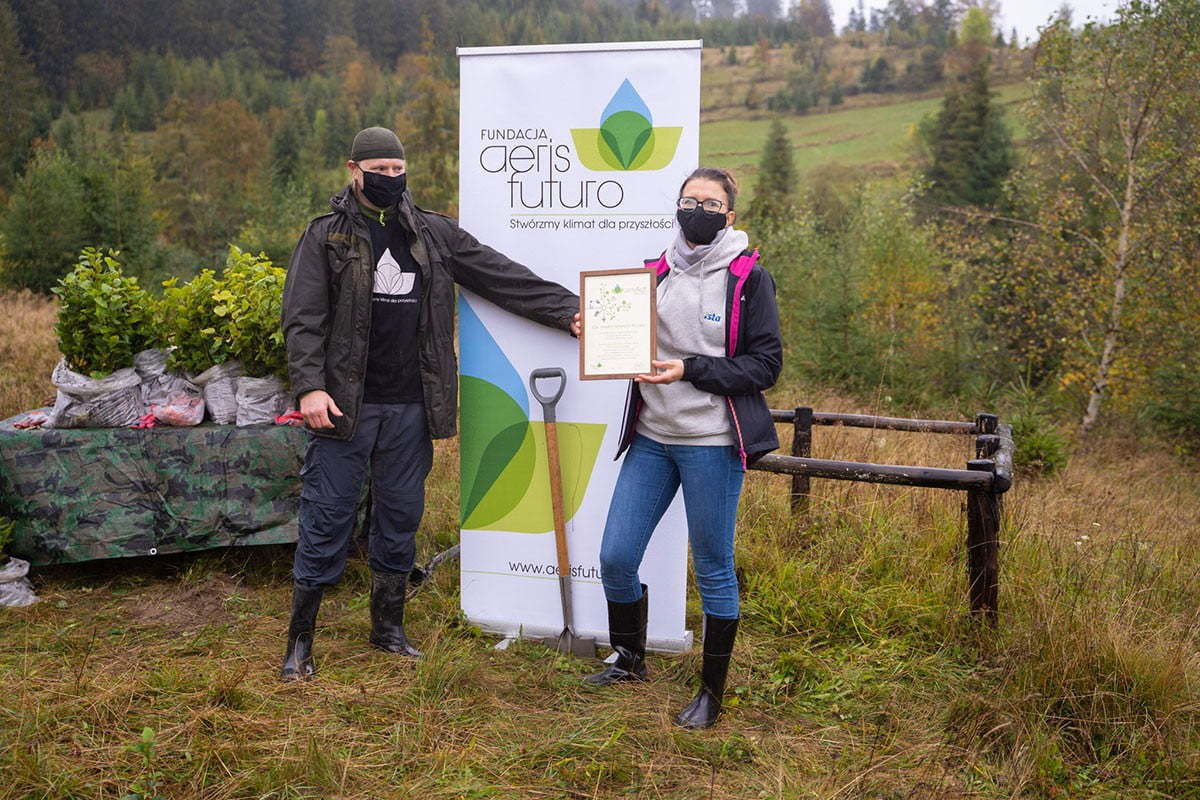ISTA SHARED SERVICES POLAND – we planted 500 trees

Beskid Żywiecki has been enriched with more trees. What is worth knowing when planning such activities? What should be taken into account when choosing the species of trees we plant?
Recently, there has been a lot of talk about water retention: flower meadows, backyard rainwater tanks, levees on drainage ditches. Rarely is it pointed out that forests, in addition to their huge role as a carbon sink from the atmosphere, also have the ability to retain water. This capacity depends primarily on the species composition and degree of canopy compactness, so not only is the planting itself important, but also the proper selection of the species we plant.
Where have we planted 500 trees?
On October 12, 2020, together with ista Shared Services Poland, we started planting 500 trees in Ujsoły in Beskid Żywiecki. The planting has already been completed, and the growing trees will absorb CO2 emissions during their lifetime, as well as support the surrounding ecosystem.
The area is mainly dominated by spruce forests. Residents there have long noticed a problem with the moisture content of the forest habitat, which is due to the fact that the existing stand of trees is characterized by a species composition incompatible with the habitat. In the 19th and 20th centuries, the proportion of silver fir in local forests fell dramatically. Currently, only human intervention can restore the natural character of the local habitat due to the tree’s very long growth, resulting in little profitability for landowners. Therefore, thanks to the initiative of ista Shared Services Poland, we decided to plant 100 fir trees in these very areas, in addition to 400 beech trees, which for years were considered an undesirable species in the area.
 How do trees support and optimize water retention?
How do trees support and optimize water retention?
Forests accumulate snow and extend its melting time, therefore significantly delaying snowmelt runoff. Trees also capture horizontal precipitation: fog, frost, rime, and rime, and the presence of forests in a catchment significantly reduces the frequency of flooding. Among natural factors, forests play the greatest role in shaping retention in the catchment, which is why it is so important to maintain the right species composition by taking the initiative of organized tree planting. The greater the forest cover, the greater the retention capacity.
Sincere thanks to ista Shared Services Poland. Without them, these trees would not exist.



 How do trees support and optimize water retention?
How do trees support and optimize water retention? 